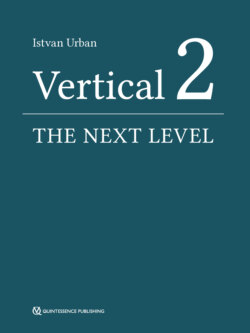Читать книгу Vertical 2: The Next Level of Hard and Soft Tissue Augmentation - Istvan Urban - Страница 14
III. The effect of the use of a microdose of BMP-2 in combination with an osteoconductive xenograft
ОглавлениеThis investigation looked at whether the use of a perforated membrane could result in faster and better bone formation with a microdose of osseoinductive stimuli.
In these cases, < 100 µg BMP-2 was used, either inside the graft or just simply placed on top of the graft. The former is called the Sandwich technique and the latter the Lasagna technique. A pure xenogenic bone graft was used. The layered BMP-2 (Lasagna) developed excellent bone formation, which was better than the internally placed BMP-2 (Sandwich) graft, which failed to form a complete ridge (specifically in the middle of the ridge). Even though the Lasagna configuration only had BMP-2 placed on top of the graft, the bone was more evenly formed throughout the entire new ridge. This investigation again demonstrated the importance of the periosteal connection, especially with a growth factor. Note that the Lasagna configuration resulted in excellent new ridge formation throughout the entire ridge (Figs 1-43 and 1-44).
The final case demonstrates the Lasagna technique, where a low dose of BMP-2 was used on top of the graft to improve and accelerate the bone formation (Figs 1-45 to 1-49). Note the complete vertical bone regeneration and the excellent bone quality with minimal smear layer that was regenerated.
Fig 1-45 Labial view of an advanced vertical defect.
Fig 1-46 A 1:1 ratio of autogenous bone mixed with ABBM is used.
Fig 1-47 A BMP-2–infused collagen membrane is layered on top of the graft (Lasagna technique).
Fig 1-48 A perforated dense PTFE (d-PTFE) membrane is used to immobilize the graft.
Fig 1-49 Labial view of the ridge after 9 months of uneventful healing.
